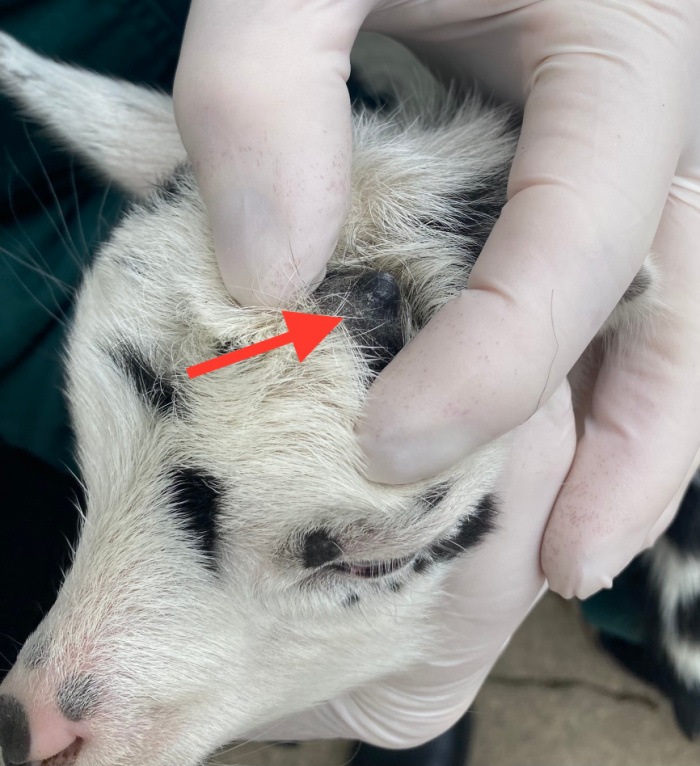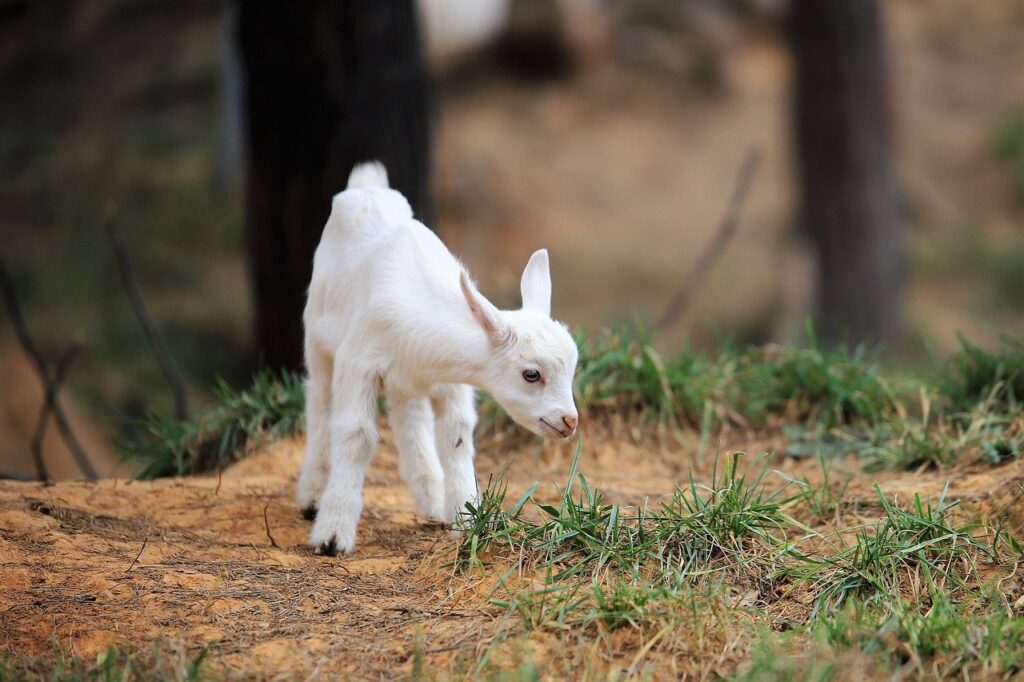After a 5 month gestation, moms may give birth to one, two (most common) or three kids (very rarely 4). Large babies, many babies and the ensuing long labor can take a toll on mom (the doe). Sometimes she may be too weak to stand and will need post-partum help recovering — a whole other article. Does may select only one newborn and kick away others — you must be very vigilant that mom licks dry each baby and stands still to let them nurse. If she ostracizes one or more babies for very long, it is really tough to get her to accept them. You either have to foster them onto another doe that is more accepting, or raise a bottle baby. This may be the most critical decision you face in the first 48 hours of life.
After that, common husbandry — warmth, dry bedding, no drafts, no predators, etc. are key for does and babies to be comfortable and thrive.
In the first three days any diarrhea can be fatal if prolonged or untreated. Clostridium and E.coli are bad news day one to three. Coccidia from muddy udders can cause bloody diarrhea as early as day 5 to 7. Talk to a veterinarian or bring a stool sample in to get an accurate diagnosis to treat diarrhea before giving shots, pills or liquid meds.
Respiratory problems also surface early in life. Kids can suffer from aspiration pneumonia during the birth process if placental fluids get into their lungs. Cold or damp weather hampers healthy lungs also. Quick treatment with antibiotics is necessary if you notice snotty noses, coughs, or any labored breathing or lethargy.
Once they pass the one week milestone — they usually are on their way to a healthy and happy life. The next issue is disbudding. A wide varying number of opinions exist, and all want to be right. In my experience, I would rather disbud a one or two week old kid when it is very easy and quick healing — than fix a wreck later on. Animals will use horns for defense AND offense: that will never change. We try to domesticate them, but their instinct and equipment still take over. To successfully disbud a 1 to 3 week old kid, I use a hot cautery iron placed over the horn bud for 8 to 10 seconds to cauterize the cornual artery and nerve. The horn then has no nerve or blood supply to grow — and is gone. Pain medication post op is provided. Tetanus antitoxin is a must due to the sensitivity of goats to Clostridium tetani. Disbudding will save many animals from getting caught in fences and strangulating, and many fences will not have to be cut and patched up. Also you are safe to walk into a pen without getting butted or gored by juvenile or adult goats.
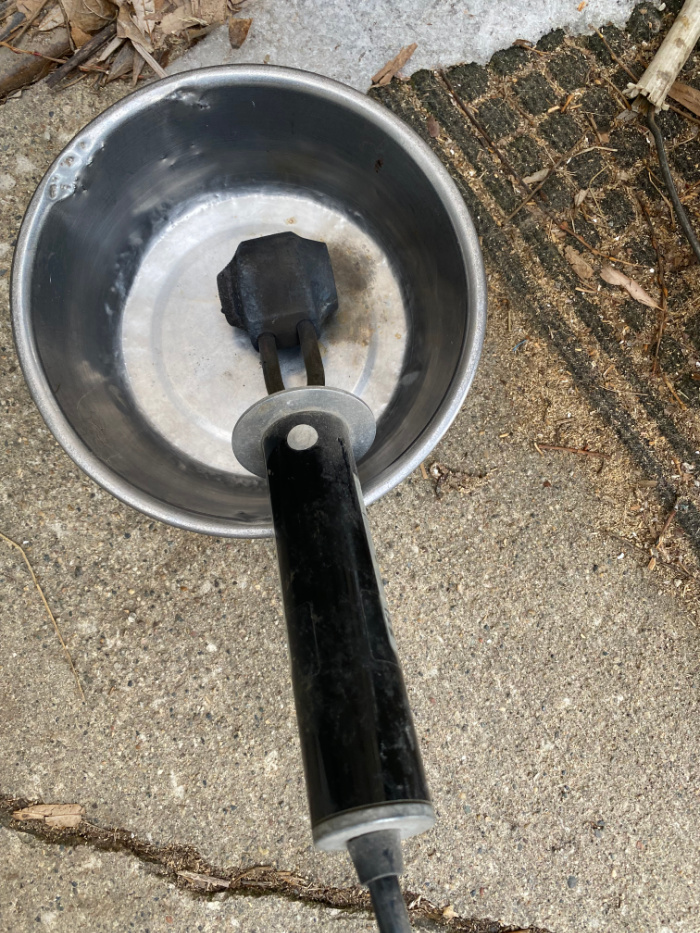
Disbudding tool used in procedure 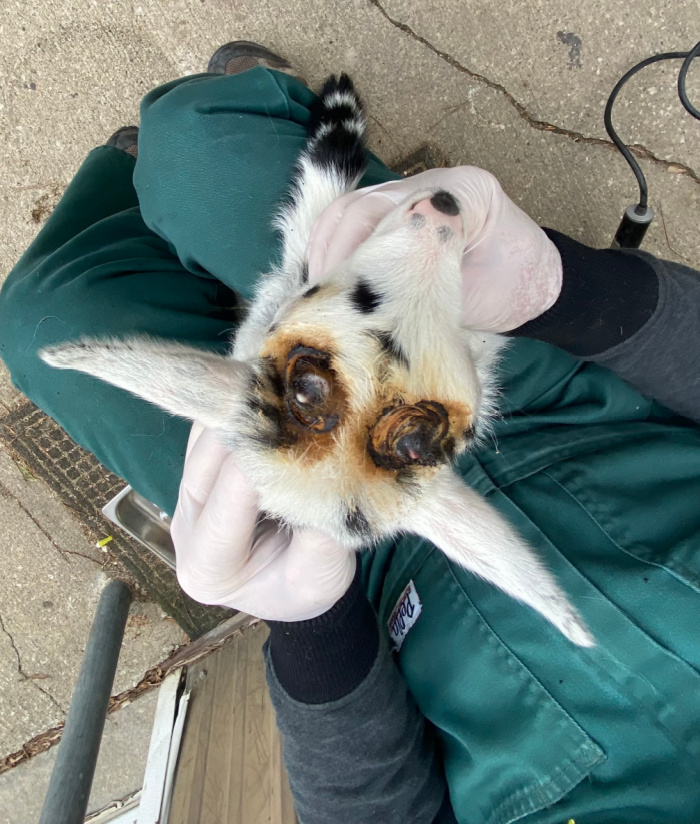
immediately after the procedure 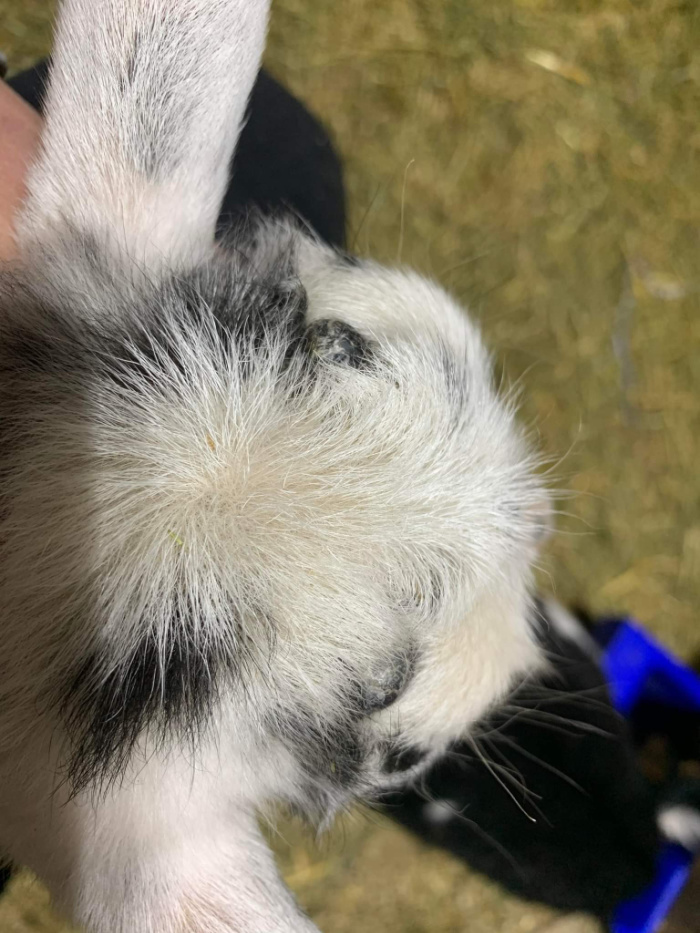
two months after the procedure
Nutrition: moms’ milk is by far the best choice for 2 to 3 months. Second choice is another goat’s milk. Third is a quality GOAT milk replacer that has at least 4.5% fat. Whole milk from cows from the grocery store has reduced fat (down to 2%) and provides only half the fat needed.
Next goat starter pellets with vitamins and free choice GOAT mineral works well at weaning. Most kids will be grazing next to mom before weaning and ready to eat grass at three weeks old. Grass in Iowa has all the needed mineral for goats to survive and thrive.
Watch for anemia — worms are a huge problem in goat herds. The FORMANCHA test determines anemia by degree of color in membranes of the lower eyelid. Soon you can be an expert in finding an anemic animal — before they become weak, lethargic, and anorexic. All dewormers will work — rotating between the benzamidazoles, ivermectins, and moxidectins will eliminate resistance problems. Injectable or oral is a personal choice. It is recommended to have stool samples analyzed for # and type of parasite in a herd. It often amazes me how many parasites can live inside an animal without any outward evidence. Some herds are dewormed monthly, some 3 to 4 times a year, and some do not need any — no one rule fits every farm.
Exercise: Goats are nimble climbers by ancestry — and love as many climbing challenges in a pen as your imagination can build. Asphalt shingles on steep surfaces provide grip and keep hooves wore down. Without wear, goat hooves should be trimmed every three months to prevent curling over and possibly trapping wetness in the sole. Hoof rot can be a big problem in herds without proper hoof care.
Health care: Castration is recommended as soon as a week of age if a kid is healthy and nursing well. Knife castration is very quick and easy, or bands placed above both testicles with a tetanus antitoxin is effective also. Vaccination to prevent overeating (Clostridium C and D) and tetanus is recommended at 3 weeks of age with deworming if necessary. A booster 2 to 4 weeks pater ensure solid protection.
Goats thrive everywhere in Iowa. They are hardy and thrifty and provide a profitable business, as well as a lot of crazy entertainment for the owners. Good luck and have fun!
